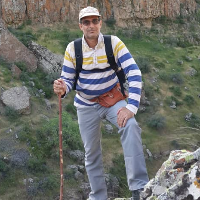Geotourism study of Ghezelowzan basin based on Fassoulas method
Iran's vast country has different geographic conditions. As of the thirteen known climates in the world, it has eleven types. This has made many environmental, natural, recreational and economic benefits. The purpose of this study was to investigate, identify and introduce the geotouristic capabilities of Ghezelowzan Basin based on the Fassoulas method. The catchment area of the Ghezelowzan is a landform of various quaternary processes that are changing. Identification of geosite plays an important role in explaining quaternary developments. The research methodology is based on description and analysis, which is described as a field study of the library to describe and describe the region. The selected geosites were then positioned on topographic maps of 1/50000 and using geological maps of 1/100000 of the region, the lithology of different landforms such as hoodoos, Behestan dom, salt domes Chehrabad, Pari lakes, copper mine Baiche Bagh, dikes Sedimentary, cuesta-like forms, kalut-like shapes, Kcadovan-like shaped forms, glacier circuses, and tectonic valleys-fridges. After identifying landforms, one of the most common and comprehensive geotouristic models called Fassoulas was used. The criteria defined in this model were defined in six main categories: scientific, ecological, conservation, cultural, aesthetic, economic and potential use. By assessing landforms in this model, it was determined that the chimneys of the Jen, Behestan, dome, Darband Ghaterchi valley and salt Dome of Chehar Abad were selected as the most suitable geocites for obtaining the maximum scientific and ecological score, while the Belogice glacier landform was also the lowest.
-
Monitoring surface material movement in Ovan Basin using satellite images
Gholamhassan Jafari *, Mina Timaji
Hydrophysics Journal, -
Spatial Identity of Landslide Risk in Eastern Alamut (Case Study: Ovan Lake)
Gholamhassan Jafari *, Minan Timaji
Journal of Geography and Environmental Hazards,



